Stories from the Hood, Part Six – The Damascio Buildings
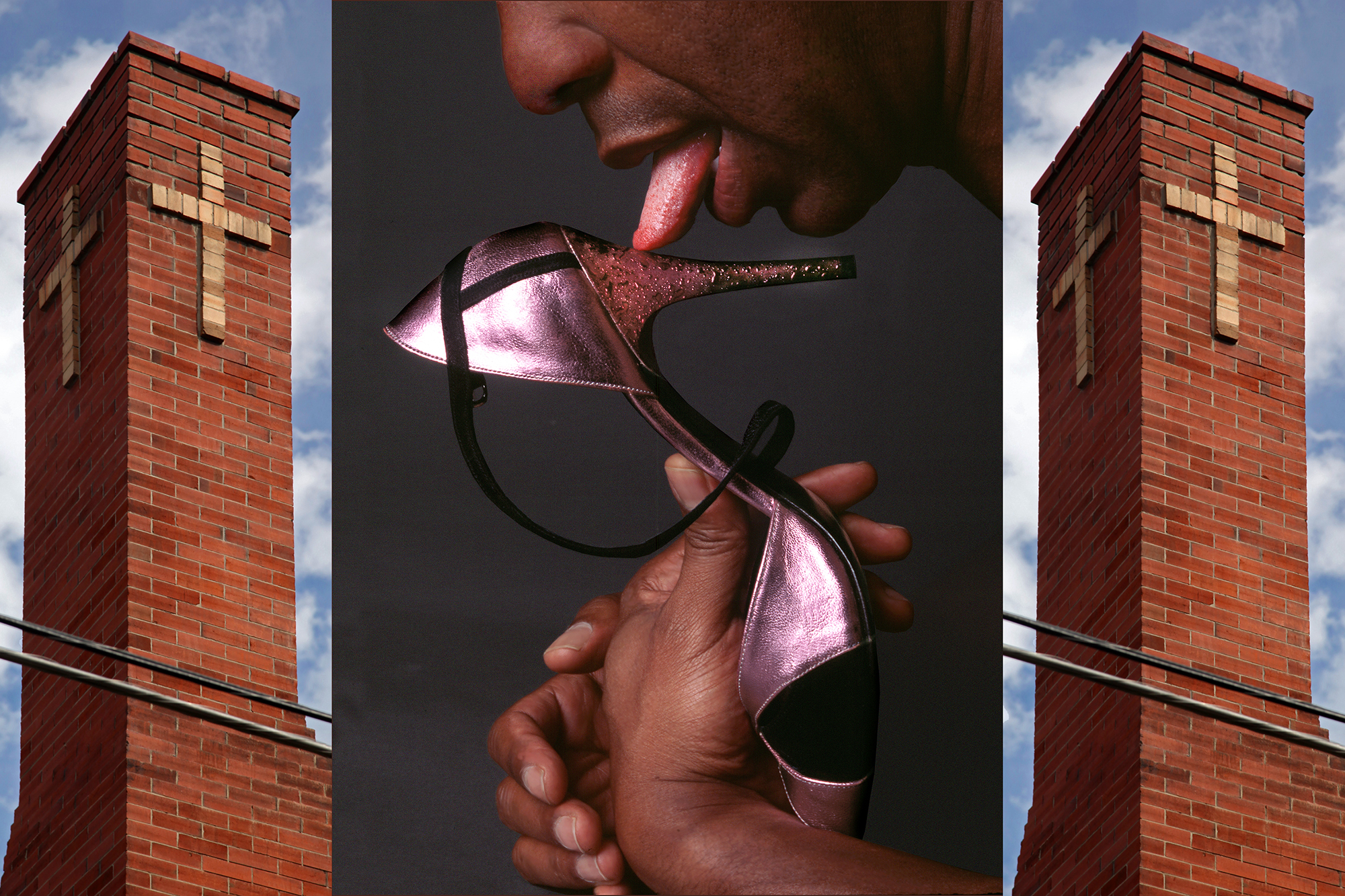
Stories from the Hood
The Damascio Buildings
Chapter Six
Catty corner across the street (to the northwest of my residence), sits a rather nondescript duplex. The bland architecture garners little attention while it functions as a section 8, subsidized family rental. Most houses in the area were either built in an older era or during the present building boom. This duplex was constructed in the early 1960’s after the demolition of a spiritual structure that stood in its stead for over half a century. I look across the street at this lot and envision the shear presence that the San Rocco Chapel must have had on this corner during the peak of Denver’s Little Italy. This magnificent chapel was an integral part of North Denver history until it was demolished in 1955 and replaced by these “terraces”, as the older folk in this neighborhood refer to duplexes. Around that time, what is now the Pecos Community Center, a block up the street, was built to function as the new Italian high school. Prior to that time, the San Rocco Chapel building was the Italian school. With the advent of the new Italian high school, San Rocco Chapel no longer functioned as a school and the Catholic Diocese decided they did not need two churches in such close proximity. The upkeep was probably considerable and the San Rocco Chapel was demolished and the lot sold to the city.
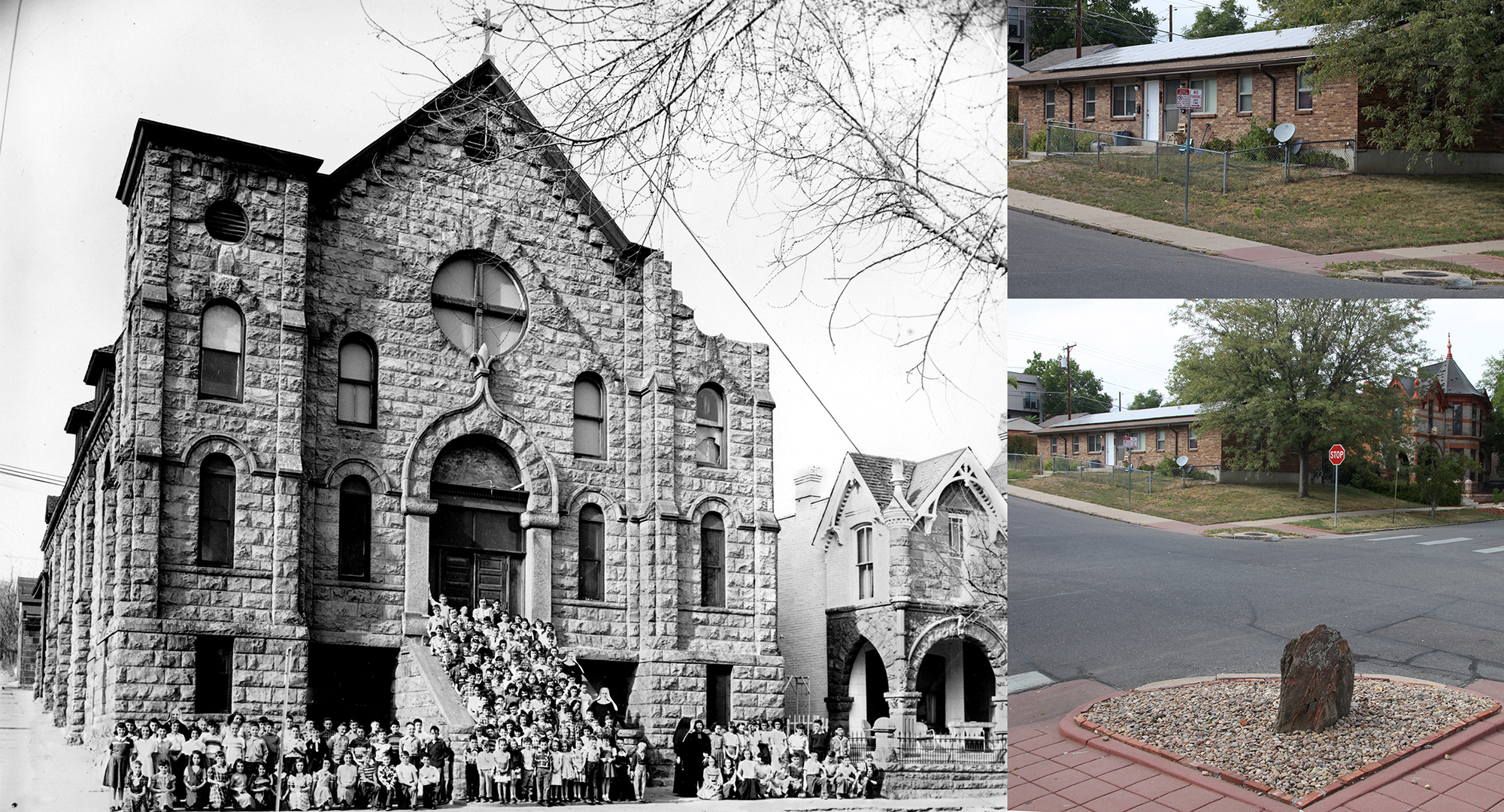
Across the street to the north is another set of “terraces”. These row-houses were built in 1896 when brickwork was the vogue and preference in building. As with much of the brick architecture of the time, the masons often include wonderfully detailed personal touches. Monumental brick constructs include the neighborhood’s elementary and junior high school. My house may have originally been brick as well, later to be covered with stucco. One may wonder why there are so many brick buildings in Denver. The answer is fire and bacon. This story goes back to 1863 when fire leveled the fledgling city of Denver to the ground. At the time, most buildings were built out of resin-rich pine. At 1:00 a.m., a fire broke out in Denver proper. The close proximity of the wooden buildings made it easy for the flames to spread and some warehouses held highly flammable materials like flour and bacon. The next day, legend tells that Denver smelled like a burnt BLT, hold the tomatoes. Because of this massively destructive fire, the city passed the Denver “brick ordinance” of 1863, requiring buildings to be built of brick and stone. Given Denver’s easy access to clay, brick became the building material of choice. The ordinance stayed in the books until 1960. Nearly half of all the homes in Denver are made of brick. All these old homes connect people intuitively to the past and reverberate with the lives of those before us.
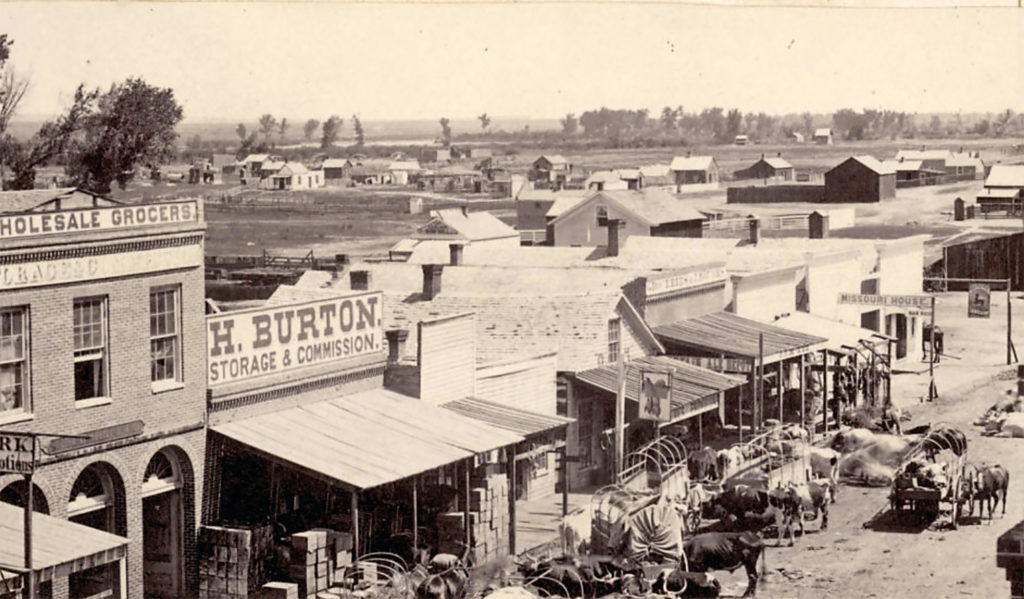


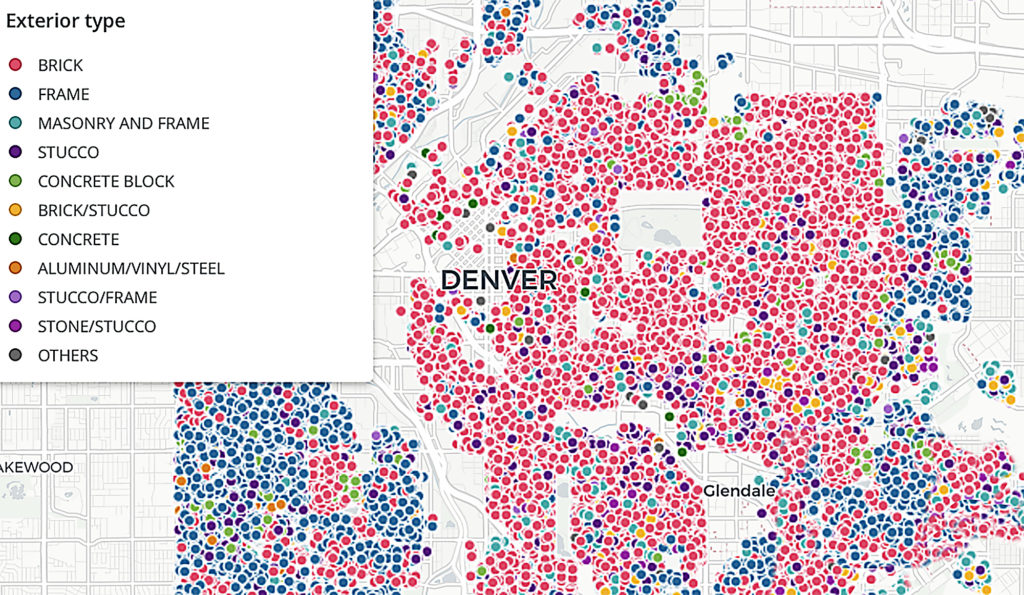
In this neighborhood, there exists some of the most amazing brickwork to be found in Denver. A couple blocks west of here is Bryant-Webster Elementary School and a couple blocks north is Trevista K-12 (formerly Horace Mann Junior High). When Bryant-Webster School and Horace-Mann School were planned in the late 1920s, (completed in 1931), radical changes in American architecture were underway. Many architects believed that the design of their buildings should reflect the time in which they were built and not just repeat designs of the past. This attitude led to the development of Modern Architecture which the designs for the two neighborhood schools came out of. It is difficult to imagine designing the brickwork for these buildings on a piece of drafting paper, let alone the skill of the brick-workers to execute them. If these architects were children in our times, they would walk away with the lego championships.
The Bryant-Webster School is the finest example in Denver of the Pueblo Deco style. The brickwork has been executed in designs inspired by Native Americans of the southwest. The architects, a team of brothers, Meredith and Roger Musick, translated motifs used in Navajo weaving, Pima baskets and Pueblo ceramics into an Art Deco style brick work. The running zig-zag frieze and the stepped diamond patterns seen on the Bryant-Webster School are hallmarks of this style.
The Horace Mann School was designed by the Denver architect Temple Buell. This building is Late Gothic in its style of Art Deco, with its turrets and shear massive presence. The design and floor-plan of this building is a giant “H”. It is interesting to imagine that these two masterpieces were both completed in the same year (1931). Watching these buildings go up, brick by brick, must have been an exciting sight to behold and watch unfold.
San Rocco Chapel was the second of three buildings that architect and stone mason, Frank Damascio built directly across the street from my house. Before the San Rocco Chapel, Damascio built the first of these three buildings in 1889 for his own residence and to accommodate a live-in servant. This house still stands in its original form thanks to the restorations that several residents invested in it over the years. It was designated as a historic landmark in 1970. The beautiful stone work and turrets always garner a second glance of admiration from all that pass by. I have come to call it the “gingerbread house”, after the magical candy house in Hansel and Gretel, with its turrets and candy-like bric-a-brac ornamentation. It is one of the historic standouts in the hood.
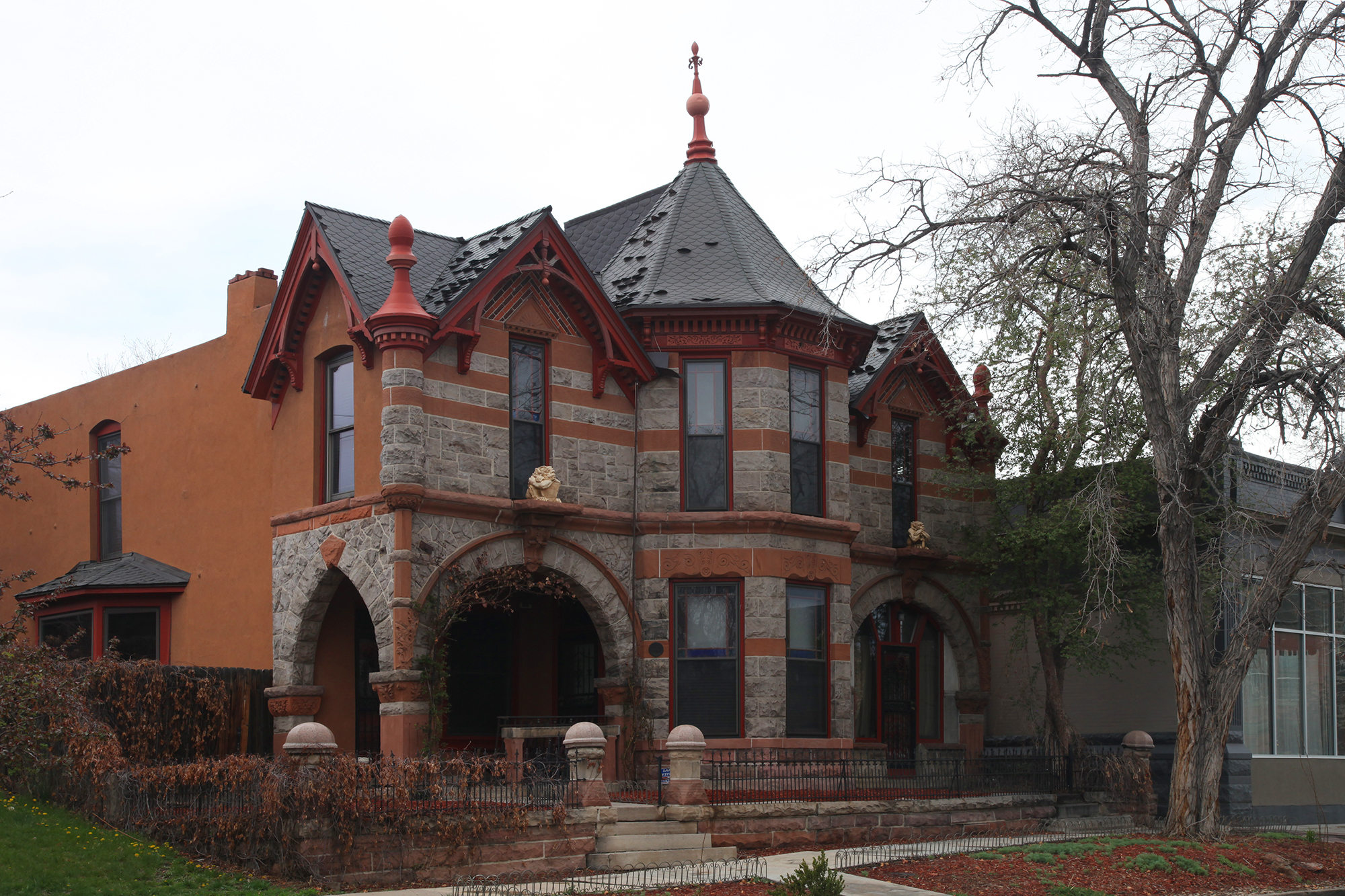

An architect by trade, Damascio moved here in the 1890’s when the stone mason work in Denver was flourishing. He prided himself as a sculptor and artist. He drew his own architectural plans and enjoyed making humorous pieces such as of his favorite dog and sculptures of Mutt and Jeff. He must have had a good sense of humor and a well-stocked repertoire of pun-based jokes. Buildings in Denver that he oversaw stonework for include the Brown Palace and Mining Exchange Building, downtown, and he played a prime role in building the Immaculate Conception Cathedral in Denver’s Capital Hill. Not long after moving here, he became one of the wealthiest men in Denver. Damascio was a dominating community figure until his death in 1922.


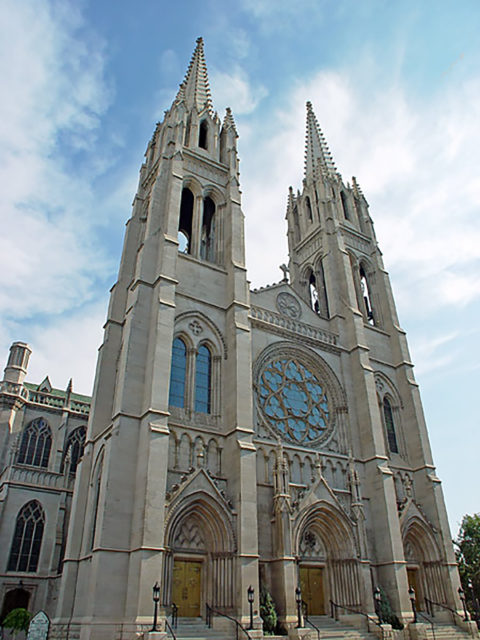
At five foot one inch, Frank Damascio made up for his short appearance with a huge walrus mustache, the likes of which were very popular during his time. Damascio, Mother Cabrini, and Father Lepore were the three main characters on stage in the drama that unfolded in this hood’s early history. They must have made quite a visual trio with Father Lepore adorned in priestly collar, alongside the figures of Mother Cabrini in Victorian habit and the fashionable, diminutive dandy Frank Damascio. Mother Cabrini was the bridge between these the two men, as Lepore and Damascio were arch rivals.
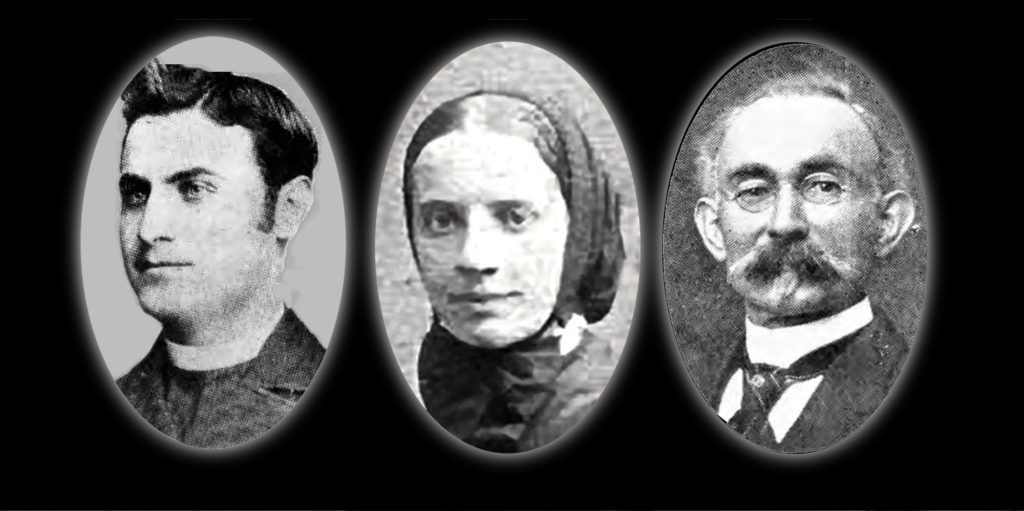
Provincial rivalry and bitter infighting amongst those within the Italian community was inbred from the very beginning. The Italians were of two sorts, industrial workers from northern Italy and farmers from southern Italy. As a matter of note, in 1875, only a few years after the Italian community was established in Denver, a gang of eight Italian immigrants hacked several of their fellow nationals to death while a harpist from the group played in the background. . The Rocky Mountain News avoided the inside-racial motives and just noted that both the accused and the slain were Catholic, but “not very devout”. The Rocky Mountain News also commented that the harpist “reminds us of the artistic grace the Italian throws even into his crime.” Many of the opposing factions within the Italian community were brought with them from Italy, but as is common, outsider communities saw them mostly as a common Italian stereotype.
There was much prejudice facing Italians in Denver. They needed to band together against those not of Italian descent so they could live as they wished with traditional customs and way of life devoid of ridicule. As the Italian population began to increase in Denver, they were not welcome and there were many clashes. In 1893, an Italian bartender, named Dan Arata, was accused of killing a customer. Immediately after he was arrested, a vigilante mob assembled outside the jail shouting to the police, “Hang the Dago, Hang the Dago.” The mob then forcefully broke into the jail, dragged the Italian prisoner from his cell, and hanged him on the nearest cottonwood tree. The following day, they came back and filled his body with bullets. Someone cut down the blood stained sections of the cottonwood branches and sold them for ten to fifty cents a piece as souvenirs to collectors. Being Italian was a factor in this murder. The saying “blood is thicker than water” applied quite well to Denver’s Little Italy.
It was in 1891 that Father Lepore arrived in Denver to start an Italian parish. Previously, the Italians had been attending the Irish parish of Saint Patrick’s but were never welcome there, and the Irish were eager for them to move on. In 1894, Lepore purchased seven lots of land on the corner of Navajo and 36th (next to where my house now stands) and built a small wooden church in honor of Our Lady of Mount Carmel. One morning, in 1898, Father Lepore left the building unlocked after mass, as usual, and went downtown. During his absence, an arson entered the church and burnt it to the ground. To this day, it is uncertain who started the fire. At the height of the fire, the priest dramatically fainted and women gathered around him, crying hysterically. The Italian community was in flames.
Father Lepore already had a good amount of rivalry due to his notorious sexual character (see first blog). He was further denounced following the fire. Frank Damascio was the head of one of the Italian societies (Sans Rocco) and had considerable political clout. Damascio did not approve of Father Lepore and wanted him out. Led by Damascio, the San Rocco Society, brought an injunction against Lepore saying that the San Rocco Society had contributed $1,200 to the construction of Our Lady of Mount Carmel and that the priest failed in his contract, because he cut corners and built the church out of wood instead of stone. They demanded their money back and demanded the Bishop remove Lepore. The Church denied Damascio’s request. The San Rocco Society, along with three other Italian societies, denounced Lepore in a statement that referred to him as someone “who has perverted the attributes given him by God to uses of selfish cunning, hypocrisy, and deceit…”, “his character…has failed utterly to live up to even a code of morals that a semi-civilization would expect from the meanest. He has besmirched the robe he wears acts and practices that stultify manhood…to say nothing of the shame and misery he brings to his parishioners…, “…If reptiles creep into the temple,…the sanctuary does not lose its sanctity.”
Being a wealthy stone mason and an arch rival of Father Lepore, Damascio, decided to build his own chapel in direct opposition to those who wanted to rebuild the burnt down church. He led the project and built a beautiful chapel called the San Rocco Chapel next to his house. Damascio’s plan did not work when the bishop refused to bless his new chapel. Ultimately, the new Mount Carmel church was rebuilt out of brick on its original site and Damascio arranged for the church to use the chapel next to his residence as both a convent and a K-12 school for the Italian neighborhood.
Adding gas to the fire, the controversy behind Father Lepore became more heated when he tried to establish a saloon around the block. Many said it would, “warp the minds of the young school children”. Lepore said it would bring no harm to the children and that he would work to remove those from the neighborhood not in favor of the saloon. Damascio and 400 Italian families said they would never submit to Lepore’s dictates. The saloon was never built. But it is of interest to note that during this time, the first floor of my house, between the church and the chapel, was used as a bordello. All the little pieces of history that surface are much like pieces of a jigsaw puzzle that form a picture of what life might have been like back then.
1903 marked the climax between those supporting and those opposing Father Lepore when he was murdered in the sanctuary of his church, (see the first blog). After the murder of Father Lepore, Damascio reasserted himself as the prime lay leader of Mount Carmel. It is interesting to note that on August 16, 1903 another arson set the San Rocco Church and the Damascio house on fire. It was November 18, 1903 that Father Lepore was murdered. Both of these church arsons could very well be connected to the rivalry between these two men.
After Lepore’s death, Mother Cabrini accomplished much with Damascio’s help. The Sans Rocco Chapel was used as a grade school and convent under her guidance. Damascio also helped Cabrini in the evolution of what became the Queen of Heaven Orphanage. For a brief time, the Damascio house was used as a hospital and the Mount Carmel nuns and Mother Cabrini occupied it. It was a live-in hospital where women gave birth, tonsils were removed, and pneumonia was treated. It was also used as a convent until 1948. After the nuns moved out, the house was saved from demolition by being renovated into offices. In 1976 it was again saved from demolition and designated as a historic landmark. A short time after that it was converted back into a single-family home.
For the next several decades, a photographer lived there. Last week, I said “hello” in passing to an elderly woman on the sidewalk and she began telling me stories from her childhood in the hood. She mentioned the “Kavaro house”, as she called it. This was the photographer who once lived in the Damascio house. She had often gone inside as a girl and was always spooked out and afraid. She believed the house to be haunted.
In 1999, Pamela and Mash Davis bought the Damascio house. Soon after moving in, Pamela saw a short man in an old-fashioned suit standing in the kitchen looking out the window. The next moment he was gone. At first, she didn’t mention it. Around that same time, Mash saw a short man in a suit upstairs. Then one of their daughters was in bed and started screaming, “Leave me alone. Leave me alone.” When Mash ran up, the girl said she had seen a short man in a suit in her bedroom. They all compared notes and Mash attempted to communicate to the ghost, telling him, “ You are welcome to stay with us, but please don’t harass my children. We don’t mind your presence in the house but do not try to scare my daughter again.” The appearances stopped.
Later, when they saw a photograph of Frank Damascio, they realized it was him. Then things got spookier; the water kept coming on in the bathroom at night. They would turn it off and it would turn itself back on. Mash finally cut the water off from the valves under the sink… but the water still turned on. This repeated a number of times before stopping on its own. Two of their daughters reported seeing a little girl with a pink ribbon on the back of her waist appear in the hallway mirror going up the stairs. One time, their nephews Brady and Jordan, were visiting and were playing upstairs for quite awhile. When they were asked what they were doing all that time upstairs, they said they were having fun playing with a little man in a suit. The history of this house is felt as deeply on the inside as it looks on the outside. The souls of many have passed through. Joining those from bygone days, Mash and Pamela are now part of the history of the Damascio house, and bring with them unique stories of their own.
Over time, Mash has become one of my personal super-heroes. A handsome man with strong character, he somehow bridges the gap between an under-spoken, sensitive type and a man with a toughness that is a force of nature to reckon with. He grew up the quintessential hunter with hunting in his blood. After high school, he enlisted in the Marines and was deployed in the first combat stage of Operation Desert Storm during the Gulf War. When I first met him, he was running a demolition business. Now he lives the life of a sailor – working away from home and coming back to Denver to reunite with family between extended work shifts. He is presently working up in Wyoming for an oil company as a directional driller; he steers the gas and oil rig drill, and lives in a trailer next to the rig. This next story is one of my favorite’s about the day when Mash literally brought the buffalo back to LoHi.
Portrait of Mash in Desert Storm camouflage jacket and American Bald Eagle (by John Bonath).
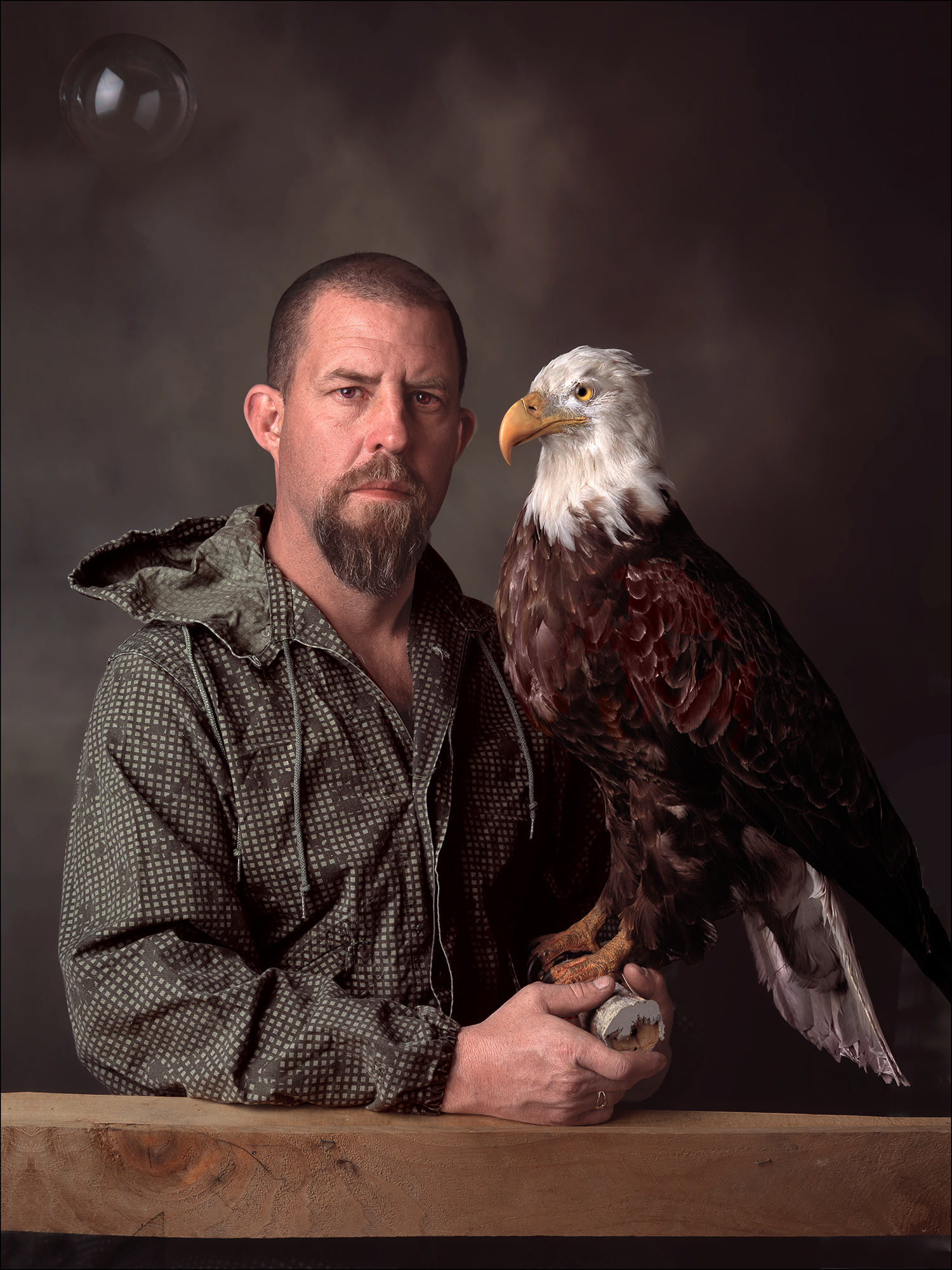

In the year 2000, Colorado was in a state of severe drought. The reservoirs that supply water to Denver were all but dried up. The state mandated its most extreme water restrictions, causing all of Denver’s grass lawns to dry up. After a neighbor’s grass lawn completely dried up, he tried installing a novel type of plastic grass. The effect was surreal but did not last long as you still needed to water it to keep it clean. Forest fire conditions were on high alert and it was apparent to all that we were in the midst of a serious, ongoing drought.
The ripple effect of these statewide water restrictions were difficult to imagine. On a buffalo ranch in Woodland Park (south of Castle Rock, Colorado), the grasslands that the buffalo fed on were dry and the water ration was not enough to hydrate the thirsty herd. The cost of hay exceeded the sale price of the meat, so keeping the entire herd fed was not a viable business option. This ranch had a herd of over 100 buffalo. The owner calculated how many he could keep alive and still make a profit under the present conditions. For the remainder, he put out a public offer to thin the herd down at $200 a cow. Hearing this, Mash jumped on the opportunity to get fresh buffalo meat for less than 50¢ a pound and headed down to Woodland Park with his hunting rifle, fork-lift trailer, and two like-minded friends.
The “hunt” wasn’t quite like a horse-backed chase from the movies but they brought back six full-sized buffalo and unloaded two of them across the street in front of Mash’s house. In the not too distant past, flaying deer and elk from a hunt in your front yard was not an uncommon affair. But in the new millennium, the site of these huge, magnificent beasts lying across the street from my house was not the typical rose bush. With Mash looking a bit like Kevin Costner, the sight of him with the bison reminded me of the buffalo-heart scene in the movie Dances with Wolves.
After depositing the buffalo on the frontage property to the street, Mash proceeded to bring out his skid steer loader, wrapped a chain around the rear feet of one bull and hoisted it high into the air, in preparation for the skinning.
By this time, the buffalo were beginning to attract attention. The first on the radar were the neighborhood street children. In a very short time, there were 15 kids, buzzing around with giddy excitement at seeing their first buffalo. The children were mesmerized as they touched them all over, petting the fur, and running their hands on the horns as Mash proceeded to skin the first one. He talked to the kids about buffaloes in general, showing them the different cuts of meat, and the skinning process. They listened, wide-eyed with undivided attention, as the red buffalo blood flowed down the street into the overflow drains.
About this time, a Native American man who lived down the street passed by and was drawn in. He asked if he could bless the buffalo and soon returned with his rattles and ceremonial paraphernalia. He began chanting and dancing around the bison as he blessed the spirits of their mammoth sacred corpses. Mash cut off one of the horns and gave it to him and gave another to one of the children.
Just as the belly was slit and the guts were being removed, a police car pulled up with sirens blasting and lights flashing. Two gruff cops with an authoritarian air got out and approached the ceremony.
“You can’t be doing this!” one loudly barked, “We have been getting lots of frantic calls from upset neighbors. What you are doing here is illegal. You’re under arrest.”
Mash, in his usual cool, unimpressed manner replied with guts in hand, “I’m not doing anything wrong… or illegal. You tell me how I am breaking the law.”
They did not expect him to stand up to them in this polite yet defiant manner, as the officer replied, “Ugh, well, it is not legal to dump blood down the street storm drain.”
By that time, Animal control had been called in and also was on the scene. They tried to write Mash a ticket but could only find reference to laws against chickens being slaughtered publicly. It was OK to publicly skin a deer in your yard. But there were no laws in the books about skinning out buffalo on the side of an inner city street. They decided that his house was no different than a private ranch where it was OK to kill a cow but that he couldn’t do it on public property. This meant the easement property in front of his house, as it was technically owned by the city. So as the drama continued to unfold, they made him move the buffalo onto the grass in his front yard, a couple feet back from where they originally were.
The officer was all fired up by this time, wouldn’t stand down, and didn’t know what to do. He called his supervisor who appeared in an instant. The supervisor talked to the huffing officer, got him under control, and asked Mash if he could have a word him on the side for a moment.
He said to Mash, “I have no problem with what you are doing. Aside from anything, it is a good education for the kids. But we have had some calls – is there a way we can make a compromise here? You have two buffalo. One is almost done. Is it possible to finish this one up and do the other in the back of your house, out of public view?”
Most would have left it at that. But Mash replied, “Your asshole officer approached me barking orders like I wasn’t even human – when there were no laws broken. There has been a lot of police infraction here and I’m not going to take this lack of respect. I will finish up in the back and clean up this blood but I deserve an apology from your officer.” Only Mash, with his presence and demeanor when challenged, could actually have orchestrated this finalé.
The supervisor went over to his officer and had a short chat with him. The officer walked back over to Mash with his tail between his legs. He tried his best to suppress the anger, and said, “I am sorry for the way I started out here, as you have broken no laws. I apologize.”
With that, Mash nodded with a glare and gave the officer a grunt of approval. The officer got in his car and drove off like a time bomb ready to explode.
As Mash finished up the first buffalo, he cut off and wrapped up some of the green meat for each of the kids to take home. The 100 pound buffalo skins were given to a friend for tanning, the remaining head was processed for the skull, and the carcasses hung in the back for a week to cure before cutting and freezing the meat.
Such a neighborhood event is but one of many events in passing, events that come, events that go, events that become forgotten in the folds of time. The rich blood of the buffalo, that once soaked the lawn and flowed down the street gutter, has vanished without trace. The memories of which live on in those few who bore witness to the history. It is a statue’s function to bear eternal witness to an event in time, forever reminding us of what once was. If I had my druthers, I would erect a bronze statue of Mash standing on the buffalo in front of the Damascio house, as a claim to our moment in history.
Just to the north of Pamela and Mash’s house is the third building that Damascio built, and as with the other two, has its own independent history. Originally, Damascio operated a commercial business from this third building called the North Denver Mercantile Company. In 1928, the Mercantile building was sold to Anthony Cerrone. It then became Cerrone’s Grocery, the neighborhood grocery store. At the peak of Little Italy, there were also neighborhood bakery ovens where women could place their dough, socializing while waiting for it to rise – at this altitude, dough rises slowly. Anthony Cerrone passed the grocery on to his son, Otty and his wife. Otty went on to operate the family grocery until 1995. In the early 90’s when I first moved here, Cerrone’s grocery was not what you would call a thriving business but it was still hanging on. I used to stroll across the street every Monday when they had their fresh slaughtered chickens or to just pick up a solitary onion, head of garlic, or fresh tomato. This little neighborhood grocery was a piece of the old world that was fading fast.
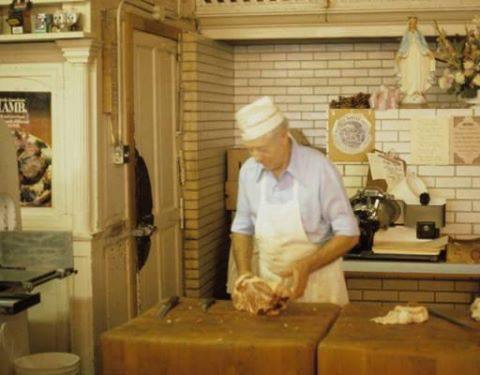
There was also a derelict and abandoned apartment space in the bottom of the Mercantile building with a private basement entrance. It was rumored that in days gone by, this space was used as a gynecologist’s office where illegal abortions were performed. When I later got a tour of this space from the inside, it reminded me of some room out of a cheap horror flick, with the whispers of ghosts wafting through the cobwebs. I did not linger.
After the Cerrone’s retired and sold out in 1995, Jim Johnson, (an artist and chairman of the University of Colorado, Boulder Art Department), bought the old grocery building. He refinished all the wooden floors, opened up the space, and renovated it into his living space and studio. . Some of the original features such as the meat locker and the huge safe, could not be removed and simply remained inside the large open space as historical artifacts. He and his girlfriend lived there for 8 years before moving on. In 2003, the next owners transformed it into a dance venue called the Tango House.

Tango began in Argentina in the late 1800’s and by the beginning of the 1900’s had spread to Paris. It peaked as the rage in Buenos Aires in the 1920’s through the 1950’s, then declined with the rise of swing and jazz. During the 1990’s Argentine tango experienced a vivid rebirth and renaissance in Denver and around the world, as it became a cult craze once again.
Aside from the sheer beauty, complexity, and sexuality of tango, some attribute its sweeping comeback to the touch-starved, lack of physical contact in modern cultures. This is as good a theory as any and is certainly a reason why many are drawn into dance. Humans are wired to be touched. On three separate occasions, I was partnered in tango classes with widows whose husbands had passed a decade ago. Upon “surrendering” their bodies in a basic tango dance frame with me, they had cathartic emotional releases and broke down sobbing in my arms. They all apologized and explained that they had not been touched by anyone in a sensual manner in decades. I think it was similar to how a massage can trigger emotional release after a period devoid of physical contact. Quite weird, sad, awkward, but interesting. Then there were those I ran into outside at a dance, crying on the sidewalk, because no one had asked them to dance. When my sympathies would get the best of me to oblige them, I would discover why. There is indeed a plethora of Eleonore Rigby’s in our modern society, that by definition, we don’t see. We are social animals and dance meets a human need for physical and social contact. Benjamin Franklin always preferred to have sex with older women, he said, because “they are so appreciative.” It is all part of the soup.
Tango offers a powerful persona that one can transcend into for a moment in time. Tango is not only a “bug” that people get bitten by, but it is the primary obsession in life of many in the tango community. By 2010, the Denver/Boulder Tango Colorado organization boasted around two thousand members.
Amidst the thriving Colorado tango scene, the Tango House flourished as one of the top tango venues in Denver. It was quite a unique and magical place, with its little round tables, a delectable smorgasbord of food, the visually alluring dance and the strange, hypnotic bewitchment of tango music. On any given night when a milonga – a formal tango dance party – was taking place, walking through the front door and changing into dance-floor shoes was like walking through a Harry Potter wall that took you back into 1950’s Buenos Aires. This exciting scene popped up just across the street. As a neighbor and dance aficionado, I became very involved with the people and the scene.
The open, wooden floor space of the former grocery, accommodated the circular flow of the tango dance well, and included a full kitchen-buffet space in the back. The counters in the back were always loaded with delectable food. For one special milonga, a full pig, apple in mouth, was buried in a backyard fire pit to roast. This ceremony was followed by digging it up, carving the meat, and presenting it with great flare. A bite was heavenly; the succulent swine meat melted in your mouth as the tango music playing in the background. The tango community breathes air and drinks wine. Since the Tango House didn’t have a liquor license, dancers discreetly brought their own wine to sip. The living quarters adjacent to the dance space was converted into an exclusive tango boutique, carrying a line of tango shoes from Buenos Aires that many women simply died for. I once met two women who came to a milonga, not to dance, but because the shoe boutique was open. They were not considering buying anything, they just wanted to live the dream of trying on a pair of five inch spiked heels.
Some photo illustrations I did for a tango shoe advertising campaign.
The Tango frenzy was also happening at other Denver venues. The Mercury Cafe took a lead with traditional and Nuevo Tango. Denver also hosted an international Tango festival with a sunset milonga in the pavilion at Cheesman Park. During the festival milonga at Cheeseman Park, dancers from all over the world, with their individual styles, would glide across the outdoor pavilion with breathtaking grace. It was easy to get bitten by the tango bug, but not so easy to do it well.
The schools of Tango are varied, with each teacher thinking their style to be the only valid form. The sternum-to-sternum, chest-to-chest, energy connection between good dancers is unique to tango. There really is no other dance like it. It goes beyond the physical. At its best, it is a union where two people lose a sense of self and merge into one consciousness in a hypnotic movement through space and time – in a kind of meditative bliss, physical experience merges inside the music and is lost. It is a very sexual form of dance, but there are rules and universally understood modes of behavior that keep dancers on the same page and safe. Crossing over these boundaries is not an acceptable form of social behavior in tango.
That being said, gossip flows in abundance and romance is common to find in the tango scene. The tale of the Tango House has more than its share of gossip and scandal.
Group and private classes happened throughout the week at the Tango House, and once a month, the Tango House hosted a milonga (formal tango dance party). Word spread quickly of this new and vibrant Tango venue, and a loyal crowd of dancers and wanna-be dancers, formed its own little community. Slowly, allegations from numerous women taking private lessons from Chas, the owner of the Tango House, began to surface. At first, it was just an undercurrent of rumor as most people did not see this entertaining and slight man as anything of a threat. But at times, even the large group classes got steamy with students wondering in amusement when Chas made instructional comments to the female dancers like, “Just center and relax your puss and let it sink into the floor. Make the opening between your legs more open, as if you were letting your pee flow to the floor”. Apparently that teaching technique originally came from a renowned female instructor in Buenos Aires, but in Denver, it just didn’t have the same panache.
Most allegations had to do with abuse of power and visceral contact during private lessons, which included flashing and indecent exposure. Three women took him to court and several others filed reports with the police. All the time Chas’s reputation was spreading like wildfire as a sought-after dance instructor and he began seeing one of his married students. Soon after, she became a tango prodigy, got divorced, and became Chas’s tango partner. She was a beautiful and classy Eastern-European woman who was highly respected amongst the tango community. She went on to become perhaps the best tango dancer Denver has ever seen. At the peak of the scandal, they got married. She stood by her man through it all, which included several years of court proceedings which put him on the state sex-predator list. The allegations did not involve violence or physical force but were mostly of a bizarre, persistent, kinky nature.
Chas was scrutinized by both Colorado’s slow and faulty legal justice system for pending charges and by the board of the Tango Colorado Association independently. While Tango Colorado banned Chas from entering dance venues such as The Mercury Cafe, the Turnverein, Blue Ice and the Avalon Ballroom, State restraining orders mandated that he have a third person present for any private lessons. Since I lived directly across the street, I was on call as a convenient third-party chaperon for Chas’s private lessons and received great private dance instruction along with some wonderful partners.
Through all the drama, the tango community was split into two factions. A majority of the tango community officially boycotted milongas at the Tango House completely. There was however, a substantial and dedicated family of die-hard tango enthusiasts who either didn’t believe the allegations, were ambivalent, didn’t feel a threat, simply liked Chas, or were not into throwing stones. While Chas brought on the events that resulted in his demise, some dancers thought of Chas as a flawed but harmless guy who hosted great milongas and quality classes. The Tango House community embodied a renegade spirit that brought people of all ages and walks of life together through a common passion for tango culture. The Tango House was host to an extremely unique community of people that brought much joy and friendship into each other’s lives, despite the scandal. There was a feeling that blood was thicker than water and the Tango House community was rich and worth saving.

As the lawsuits drug on for years and acts by Tango Colorado intensified. Some influential members of the tango community brought Westword on board with their mission to drive Chas out of town. One night in particular, there was a sombre milonga at the Tango House. The day before, a five-page, cover story in Westword came out in which a seamy and convincing picture of the accused was painted .
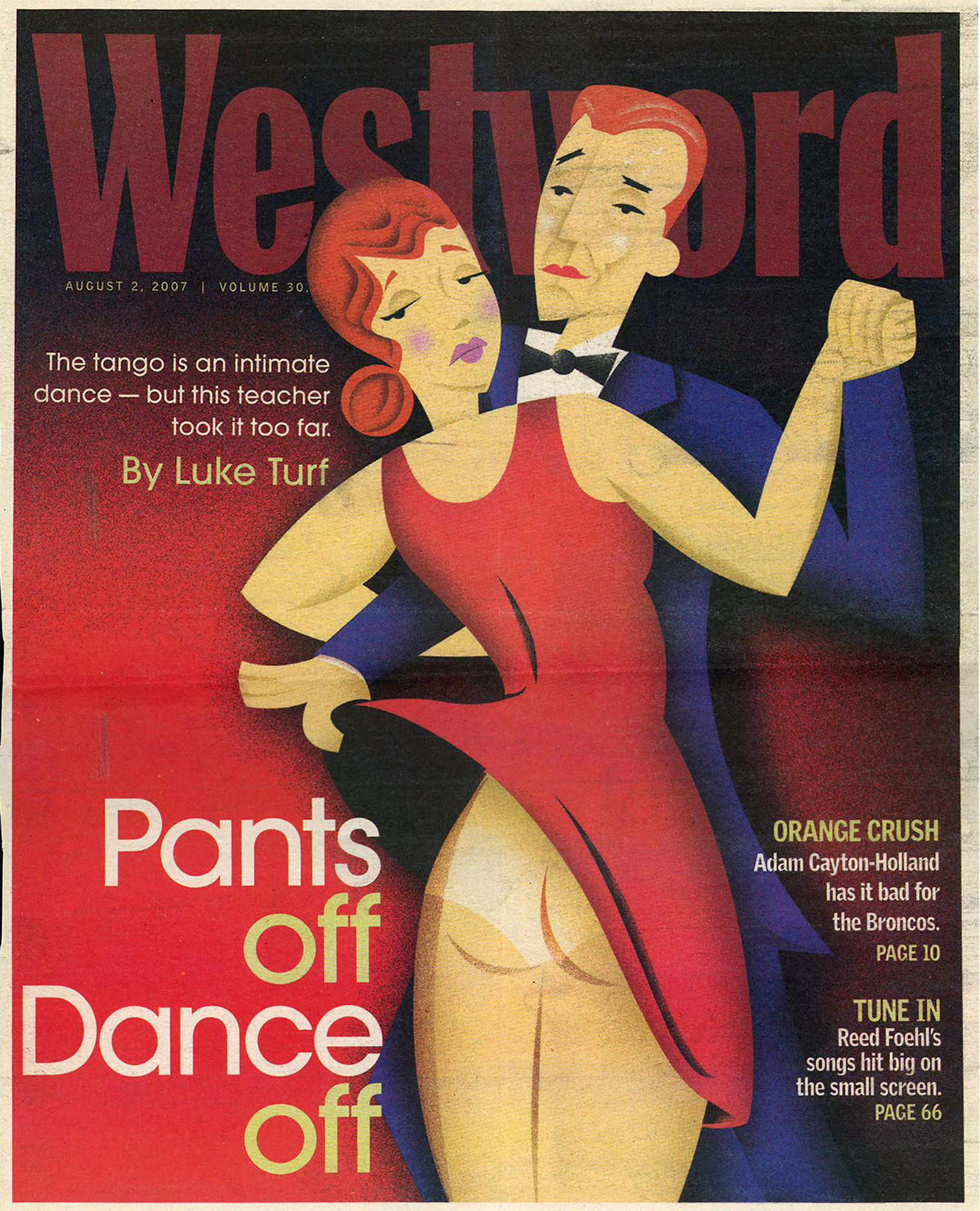
The lengthy feature article starts out:
The dance begins in the eyes of the man, searching from woman to woman. Some of the women will make eye contact for a second, then break it off. Others don’t even acknowledge him. But when his eyes land on the right one, there’s no confusing the look.
And there’s always a woman willing to dance with Chas, a self-proclaimed “king of tango.” After Chas locks eyes with that woman, the two move toward the dance floor and meet there halfway in an embrace, the classic start of the tango. The lights are dim overhead, and the bottoms of Chas’s expensive dance shoes caress the wooden door as he leads his chosen partner into the tanda, a set of three traditional tango songs. Surrounding the dancers is the smell of Chas’s nice cologne and the hint of a breath mint covering the odor of cigarettes…
Through Tango House history, Chas and his partner were the undisputed monarchs of their own dancing dynasty. Although they fought to stand their ground, the erosive qualities of scandal and the court expenses, eventually made it impossible for the Tango House to survive. Ultimately, Chas won his case and was acquitted of any crime but it was too late for the Tango House. Chas and his partner left Denver, and the building was sold to a Realtor. Life at the Tango House began in 2003 and had faded out by 2011.
Two very short videos of a tango and goofing around at The Tango House with my dear friends Olga and Camilo..
The Tango House was used as realty offices for a short while. But the building was in need of significant repair and ended up being gutted, massive new additions were added to the back, and it was remodeled into three modern townhouses. These days, when I walk past this building on my way to the hardware store, my imagination kicks in to remember the fresh chickens, the sheer joy of life, and the sound of tango music that spilled out of that building in times past.
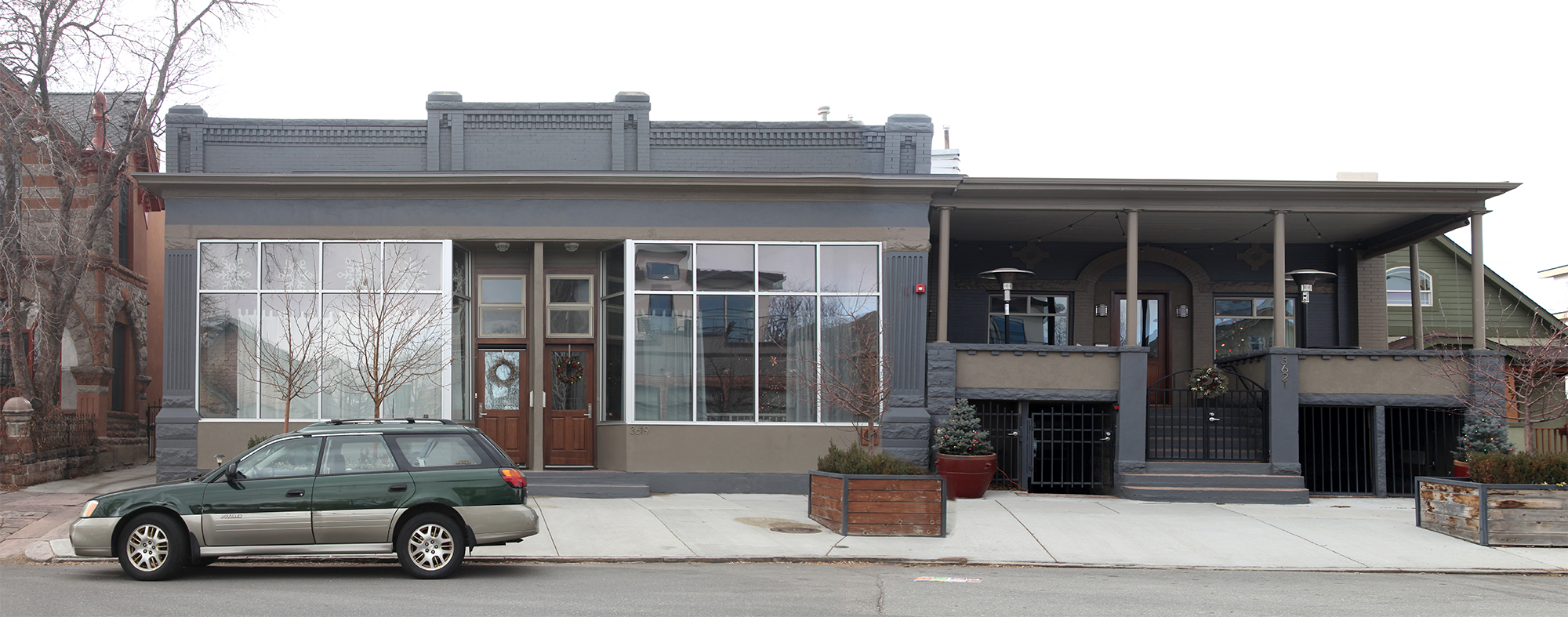


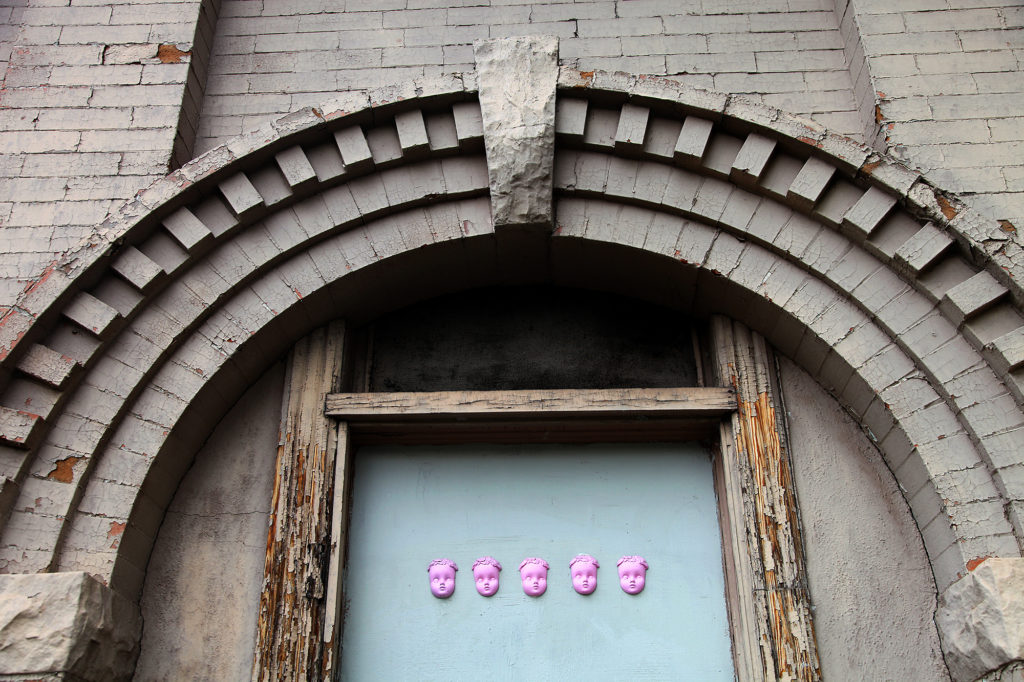




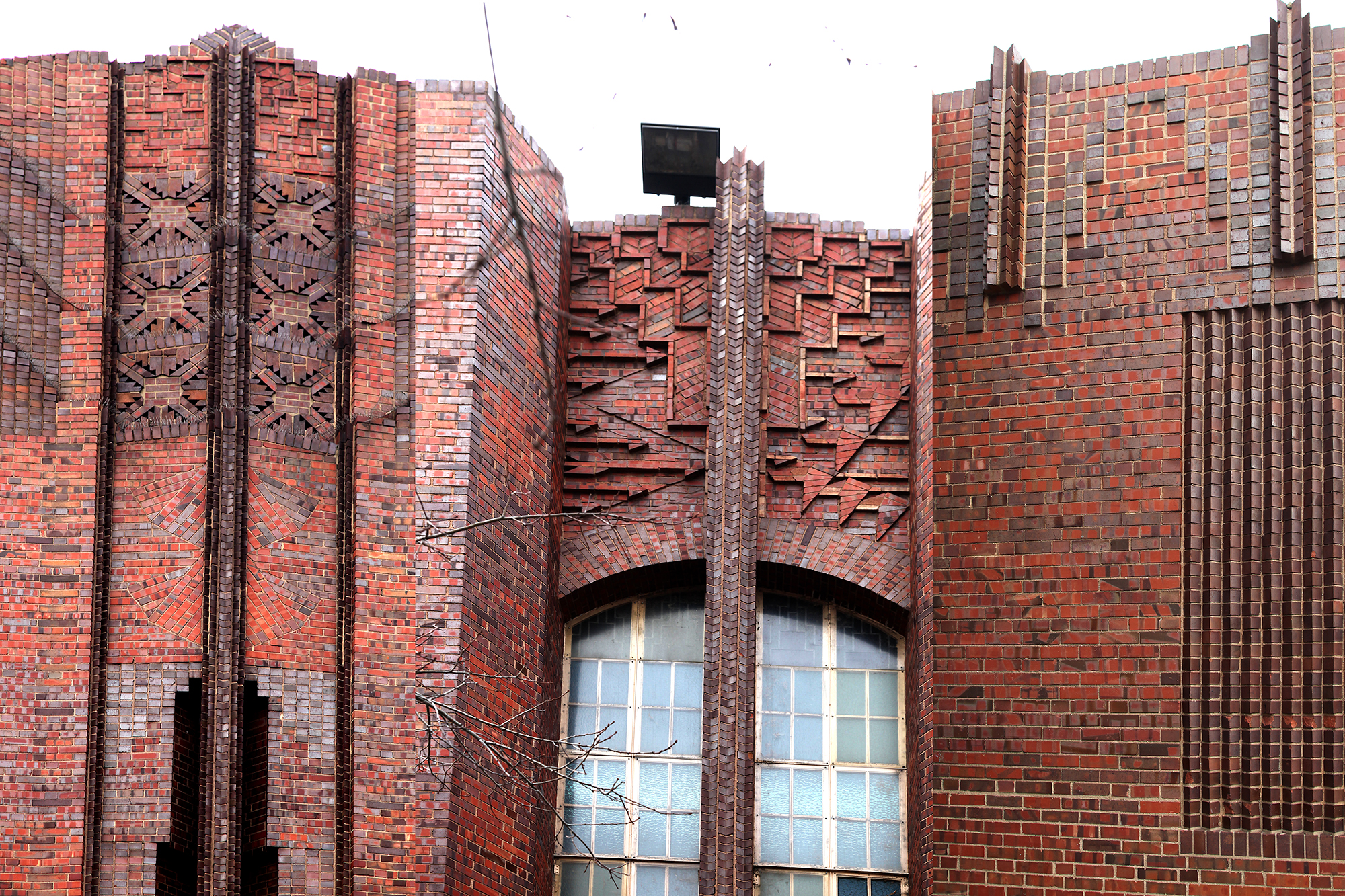

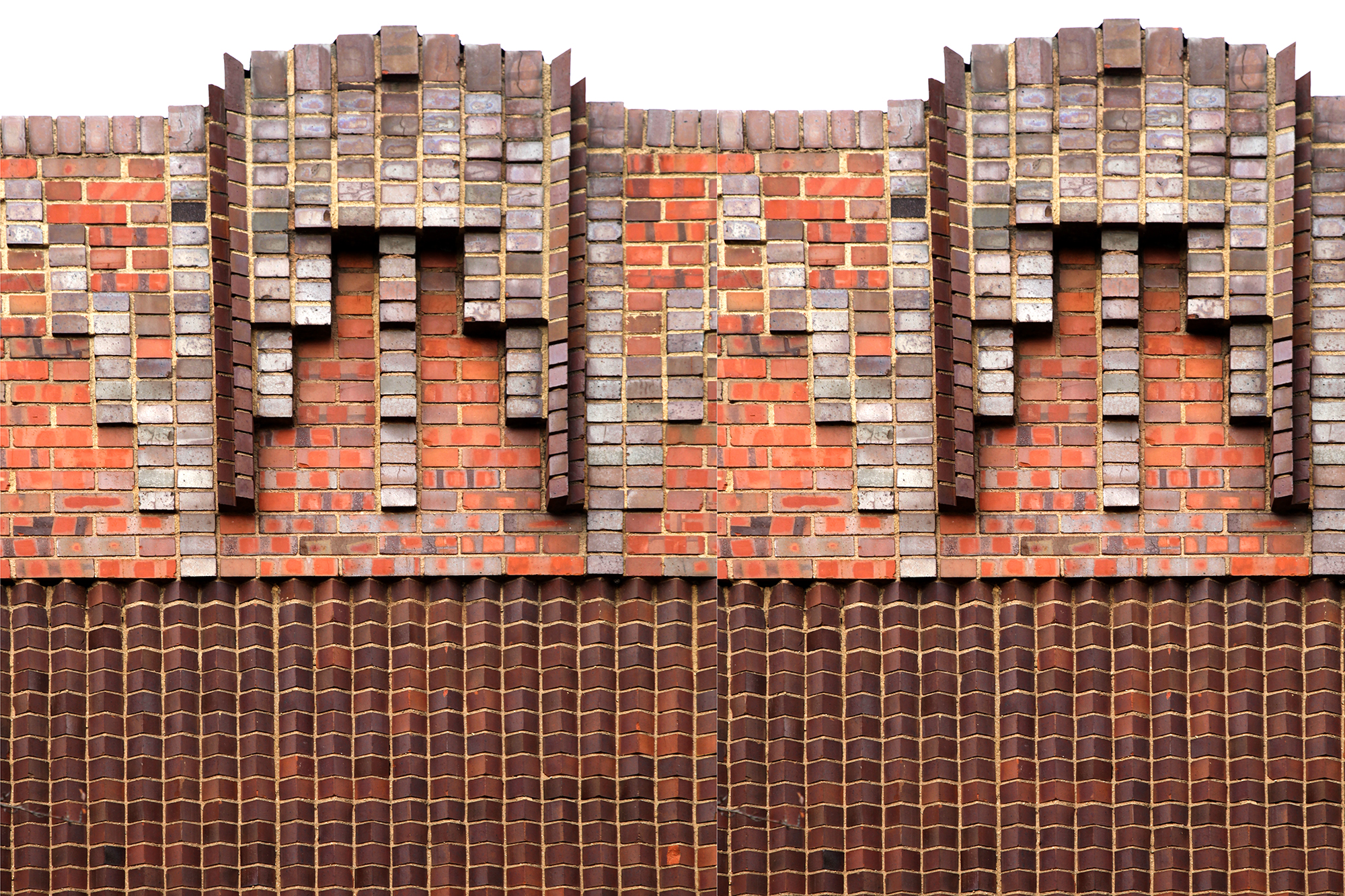
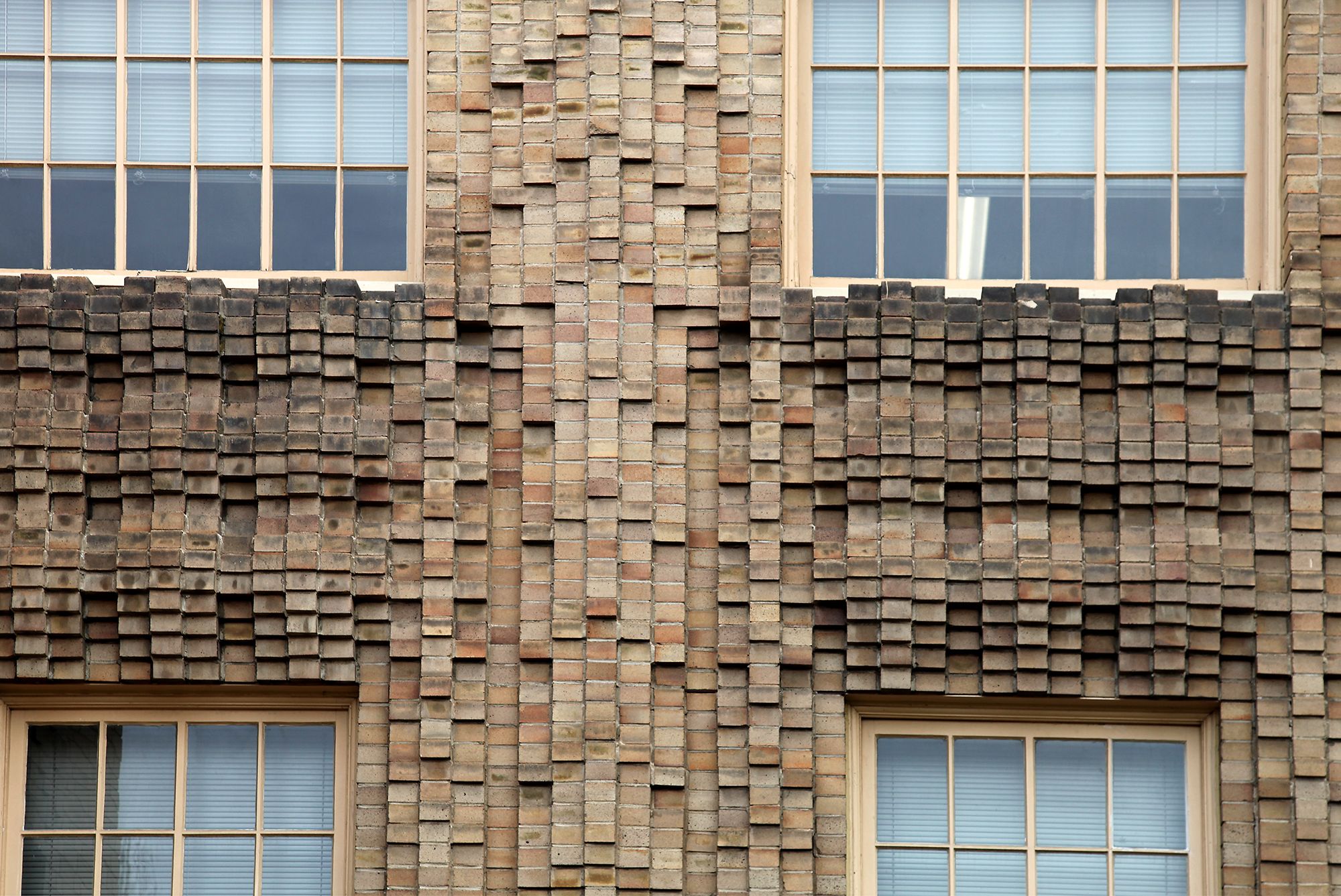





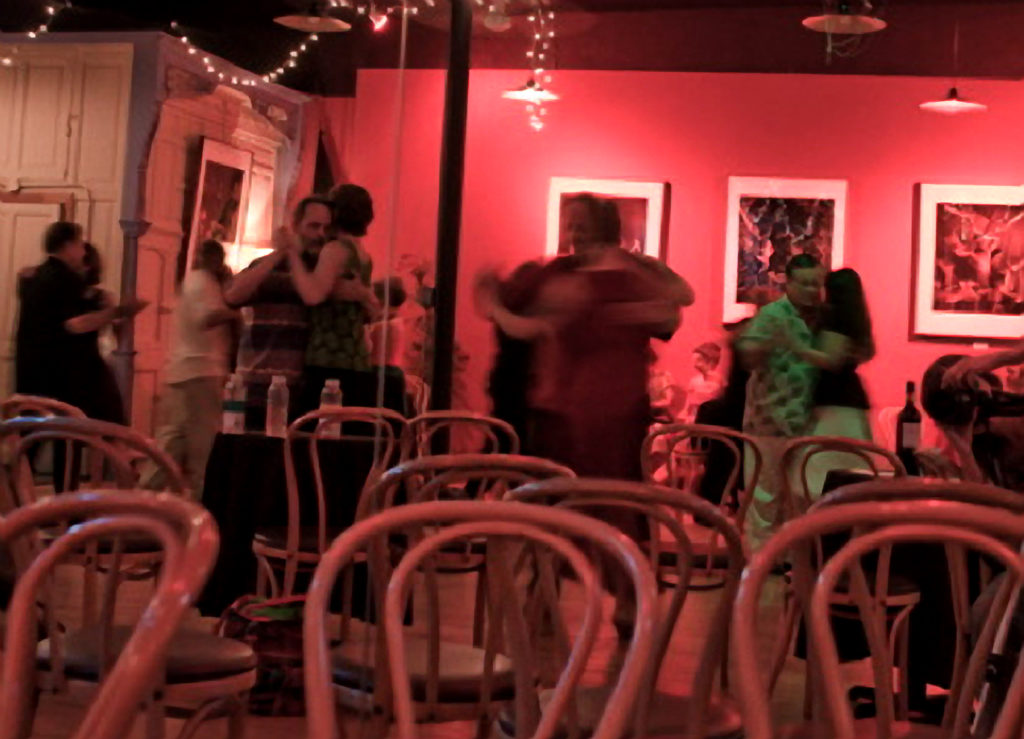

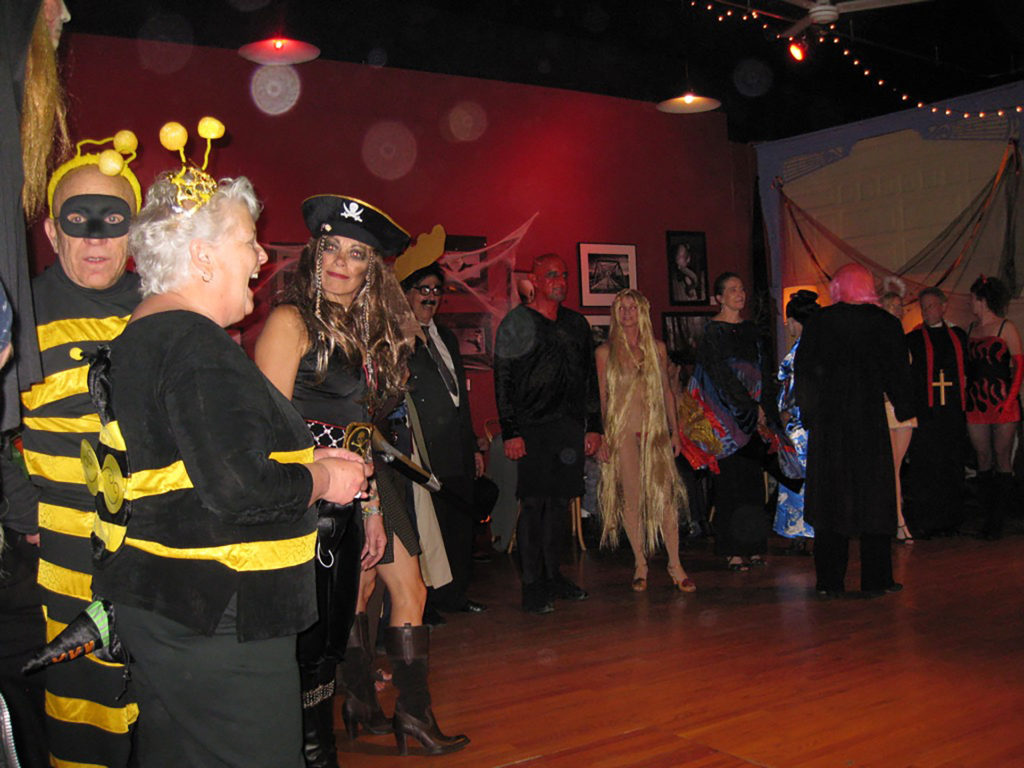
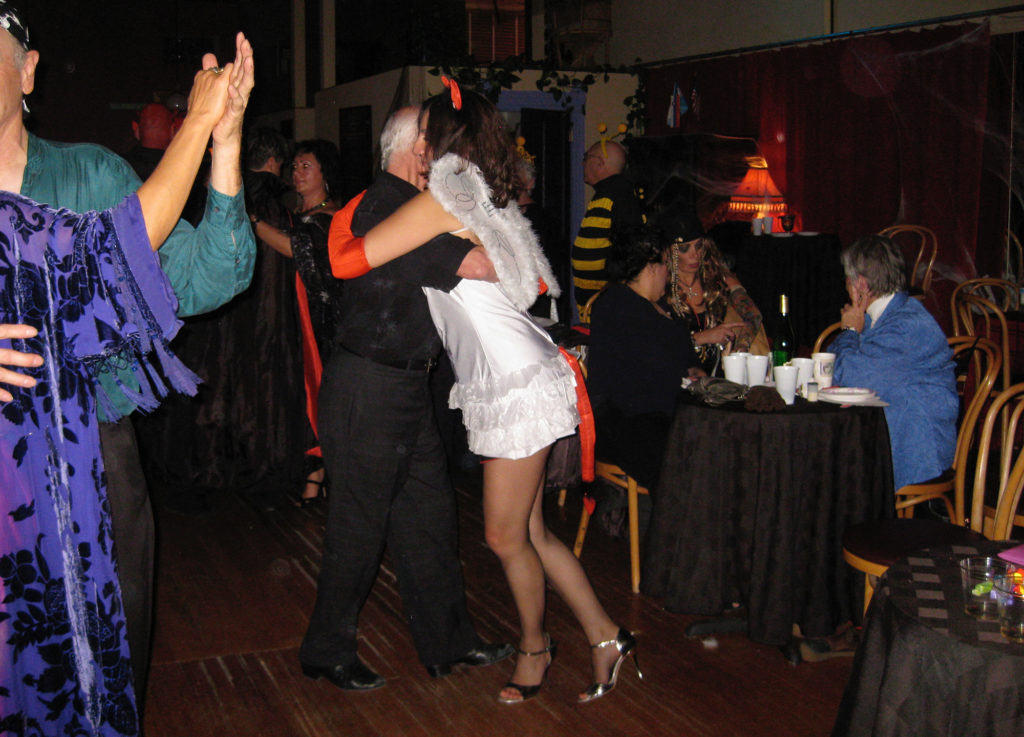
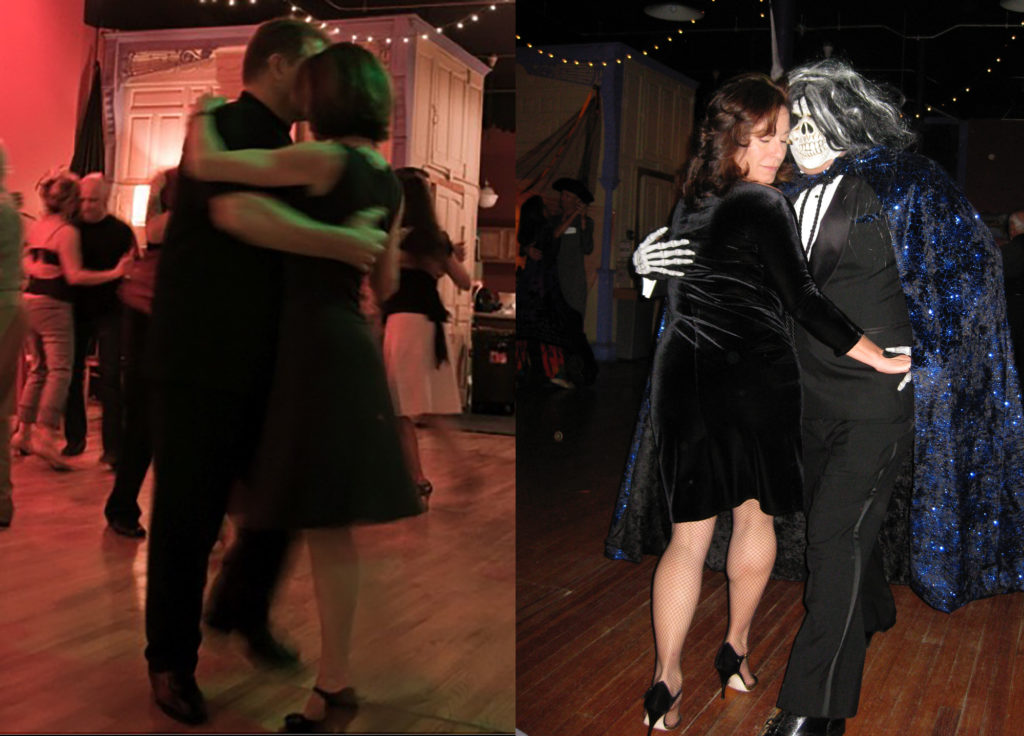



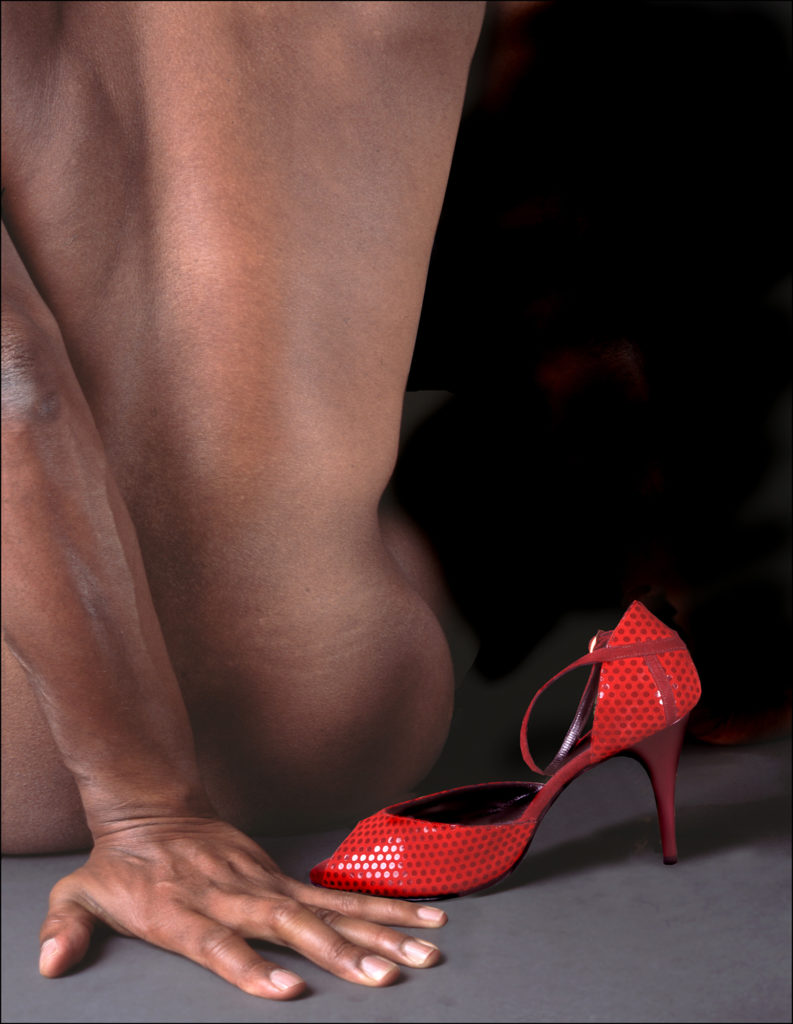

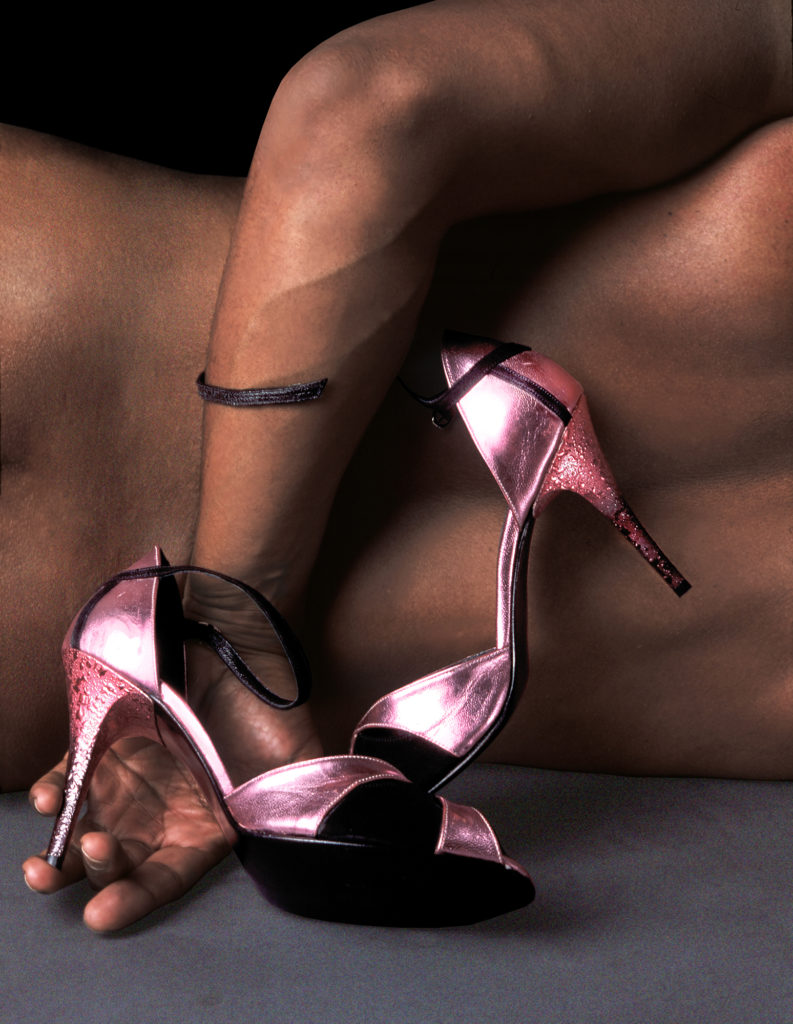
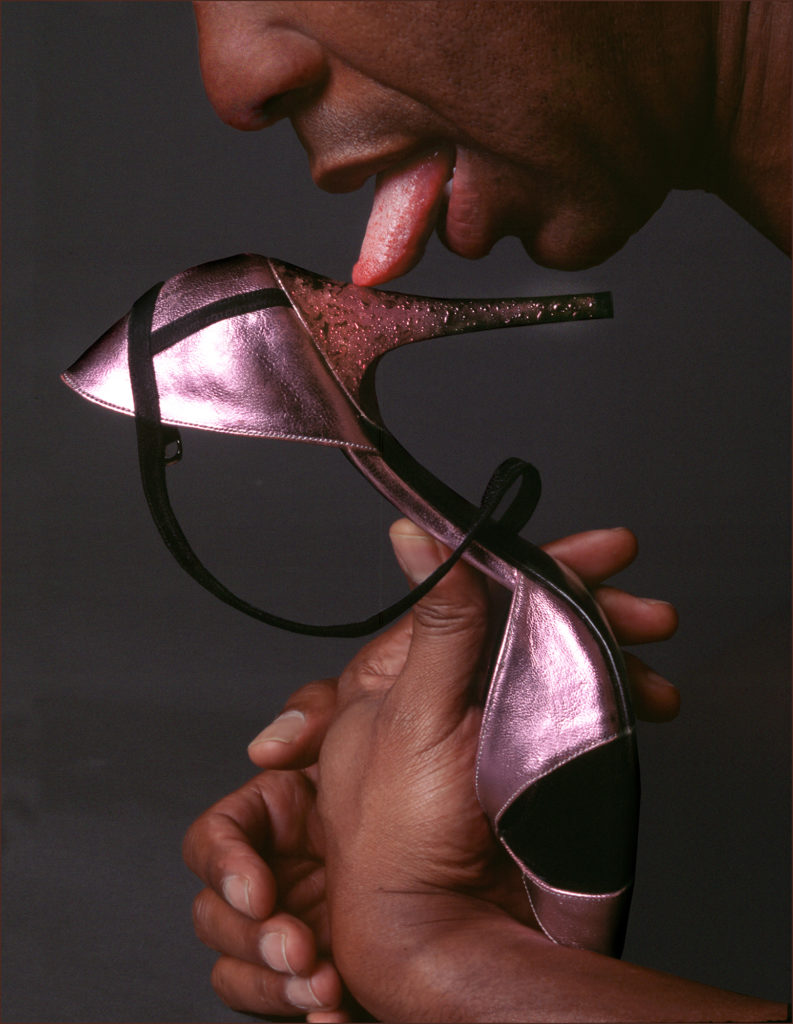

Kelly Brenner
What a wonderful story!
Mary Pridgen
I’m certainly enjoying these blogs. In your inimitable way you have taken historical research to new levels.
Petert
John. I am amazed at the amount of time and research that you are putting into your blogs. They are very interesting and skillfully written. Kudos! The next time I travel to Denver I will drive by your hood so that I can see the places you write about, first hand.
Lorelei Schott
What an interesting part of Denver your neighborhood is and thanks to you, its history will live on! Amazing stories and well told; thanks for sharing them John!
Barbara
Your interesting historical stories continue to captivate and amaze! I always wondered about that “ginger bread” house and really enjoyed reading
about all the peoples who lived there. You made their stories so alive
Dominique
HI John, I read this section with great interest. It brought back many memories and filled some holes!
Michael Holtby
I hated history in high school, but I didn’t have you as a teacher. You have brought the neighborhood alive with lurid, and personalized episodes. I hope your blog lives on long after we are both overtaken by the Covid-19 virus.
Aspen Hunter Davis
John,
This has been incredibly enlightening to read. I have learned so much that I had absolutely no idea about. Thank you for the time and energy you put into your research. There are a lot of stories I knew about but the details were skewed. I remember my dad skinning the buffalo in the front yard but I had no idea about the ceremony and the children… how beautiful. Growing up in The Damascio House, as the daughter of Mash and Pamela, thank you for bringing parts of my childhood back to life. This made me very emotional. I found it very interesting to me to see a picture of Frank Damascio, as I remember seeing him in the house as a child upstairs. He was sitting on the armoire at the foot of my parents bed, bending down and tying his shoe. I was standing at the top of the stairs staring at him. I was about 5 years old. When he realized that I was looking at him (or could even see him rather) he raised his hand and waved to me confused as if to see if i was actually looking at him. I waved and walked down the stairs and that was that. As a child I thought nothing of it but looking back I have an extremely vivid memory of that. Hope you are well.